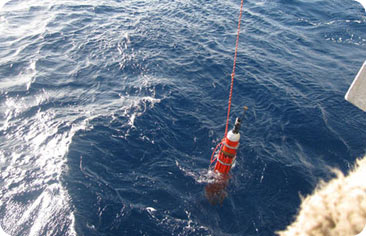180210-long-diver.jpg

SOLO-TREC being deployed near Hawaii. Credit: NASA/U.S. Navy/Scripps Institution of Oceanography
Sometime in the not-too-distant future, small submersibles might patrol the world’s oceans for months or years at a time. They’ll monitor temperature, salinity, currents, and other conditions. And they won’t need to gas up their engines or replace their batteries during those long cruises, because they’ll get their power from the oceans.
NASA, the Navy, and the Scripps Institution of Oceanography have already proved the concept with a test vehicle called SOLO-TREC. It made its first dive late last year, and during a three-month trial run it completed more than 300 trips into the Pacific Ocean near Hawaii. The tests were so successful that the program has been extended.
SOLO-TREC generates power by bobbing up and down like a pony on a merry-go-round. When it bobs to the surface, the warm water melts a waxy material contained in 10 cylinders. As the wax melts it expands, pushing a surrounding layer of oil into a small hydraulic motor. The pressurized oil powers the motor, which recharges the batteries.
Once the batteries are charged, the 183-pound vehicle dives up to a third of a mile deep, where the water is much colder. The wax cools and contracts, and the oil flows back into the cylinders. When the battery charge starts to run low, SOLO-TREC returns to the surface to start the cycle all over again.
The project’s early success raises the possibility that small submersibles could patrol the world’s oceans almost non-stop -- powered by the heat and cold of the oceans themselves.

